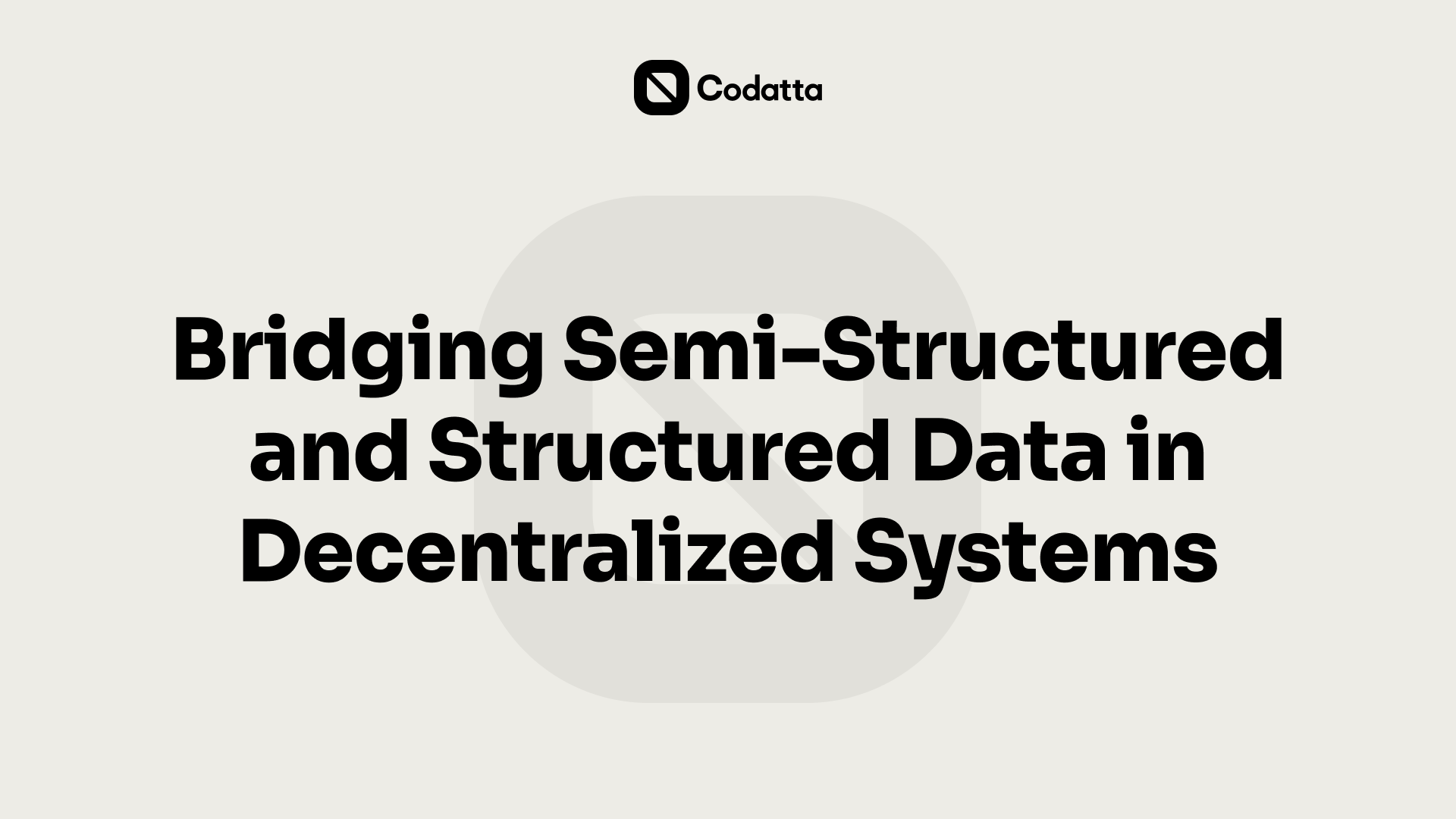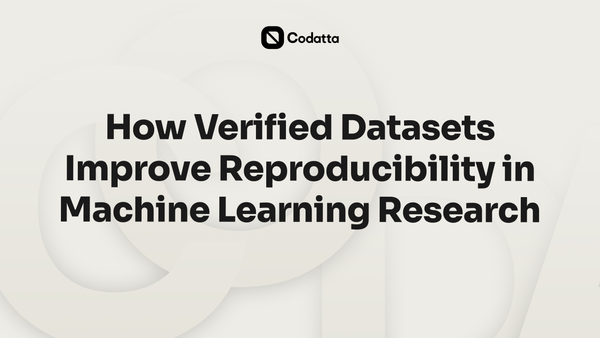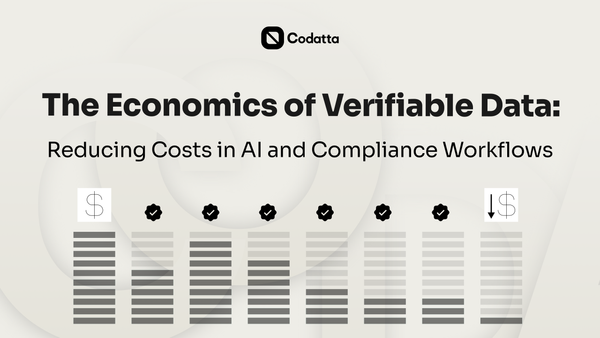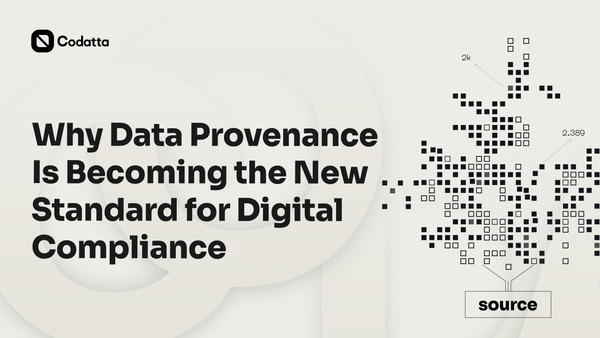Bridging Semi-Structured and Structured Data in Decentralized Systems

Data comes in different forms. Structured data is organized into tables and fields, making it easy to query in a data warehouse. Semi-structured data, such as JSON or XML, has some organization but no fixed schema, while unstructured data, like text, video, or logs, lacks a consistent format.
In decentralized systems, this mix of data types creates challenges for data management, data storage, and data governance. Without clear models, data from multiple sources ends up siloed in data lakes or spread across different systems, making it harder to maintain data quality, ensure security, and process information efficiently.
Bridging structured and semi-structured formats helps organizations manage data flows, improve reliability, and scale real-time data use in blockchain and AI applications. Read on to see why this bridge matters for turning diverse data into trusted, usable inputs across decentralized data platforms.
What Semi-Structured Data Means in Practice
Semi-structured data sits between raw unstructured inputs and fully organized structured data. Examples include JSON, XML, NoSQL records, and blockchain logs. This type of data offers flexibility and supports data exchange and interoperability across different systems, which is why it appears so often in modern data architectures.
The advantage of semi-structured formats is that they let organizations handle diverse data formats and consolidate data from various sources without enforcing a rigid schema. This makes them especially useful for data integration, data sharing, and building a data pipeline that connects data warehouses and data lakes.
But there are challenges. Semi-structured data often lacks schema consistency, which makes it harder to maintain data integrity, prevent duplication, and ensure accuracy across complex data environments. As IEEE researchers note, the variability of semi-structured data requires more advanced data engineering and data analysis methods to ensure data is organized, protected, and usable. And according to IBM, the majority of new enterprise data today comes in unstructured or semi-structured formats, creating pressure to align it with structured models for effective data access and analytics.
For decentralized systems, this is even more critical. Without a clear strategy for bridging the gap between semi-structured and structured inputs, organizations risk creating data silos and losing efficiency in data processing. To move from raw data in its native format toward raw data into actionable insights, teams need frameworks that ensure data quality, data governance, and secure handling of large-scale data across networks.
This is where the evolution of data infrastructure points: combining the flexibility of semi-structured formats with the consistency of structured systems to deliver trustworthy data that can support analytics, AI models, and blockchain applications at scale.
Structured Data and Its Role in AI and Blockchain
Structured data is information stored in predictable formats such as SQL tables, metadata registries, or labeled datasets. Because it follows a consistent schema, it can be queried efficiently and validated for data quality, making it the backbone of many enterprise and research systems.
In centralized data environments, structured inputs power data analytics tools that can analyze data quickly and deliver reliable results. Structured formats also improve data availability, since information stored in tables or registries can be retrieved on demand and reused across multiple applications.
For modern architectures such as a data mesh, structured datasets help ensure that information remains consistent as it moves across domains. They enable efficient data flows, simplify validation, and reduce duplication, all of which are critical for compliance and secure data management.
In AI training, structured data provides the clarity models need to learn patterns without being weakened by inconsistencies. In blockchain systems, structured metadata registries allow contributors and organizations to track addresses, attributes, or events in a transparent way, supporting automation, compliance, and accountability.
The Gap Between Formats in Decentralized Systems
Decentralized networks generate large volumes of raw or semi-structured data, such as blockchain logs, transaction histories, and user annotations. These inputs often come from diverse data sources and arrive without a consistent data model, making it difficult to align and reuse across different systems.
Without proper normalization, contributor inputs can become fragmented. This weakens interoperability and creates inefficiencies for data consumers who depend on reliable information for analytics, compliance, or automation. Inconsistent records also make it harder to ensure data integrity, as duplicate or mislabeled entries increase the risk of errors.
To address these issues, decentralized ecosystems must implement data governance practices that bring consistency across formats. Clear standards for data ownership, quality, and validation are key to avoiding fragmentation and enabling scalable, secure data flows.
How Codatta Bridges the Divide
Codatta tackles the problem of fragmented blockchain data by turning semi-structured inputs into structured, verifiable records. Through metadata annotation and tagging of blockchain addresses, contributors add context that would otherwise be lost in raw logs. Confidence scoring validates these annotations, helping ensure that data remains consistent and reliable at scale.
On-chain storage protects integrity and makes metadata queryable, so that it can be reused across different systems without duplication. In practice, this strengthens applications such as anti-money laundering tools, on-chain risk detection, and demographic annotation for decentralized apps. By improving the quality of data collection and ensuring that data is stored in formats that remain usable, Codatta helps transform large amounts of blockchain activity into resources that are both trustworthy and actionable.
Why This Matters for Scalable AI and Web3
For AI and Web3 systems to grow, the data they use must be reliable and consistent. Normalized metadata makes this possible by turning raw blockchain inputs into structured records that can be traced and trusted. This improves data security, helps manage large amounts of data efficiently, and ensures that critical data points remain available across different systems.
Codatta helps make sure data from multiple sources is collected and organized into formats that can be validated and reused. This creates the conditions for contributor rewards, trustworthy analytics, and clear provenance. These elements are essential in finance, healthcare, and research, where private data and compliance requirements demand accuracy and transparency.
Conclusion
The clear takeaway is that semi-structured data is valuable, but structured formats unlock scalability. In decentralized systems, comprehensive data practices and strong data protection make it possible to access data efficiently and use it with confidence.
Codatta provides the tools to normalize, validate, and reward contributor data, ensuring it can be trusted and reused at scale.
👉 Explore more at codatta.io




